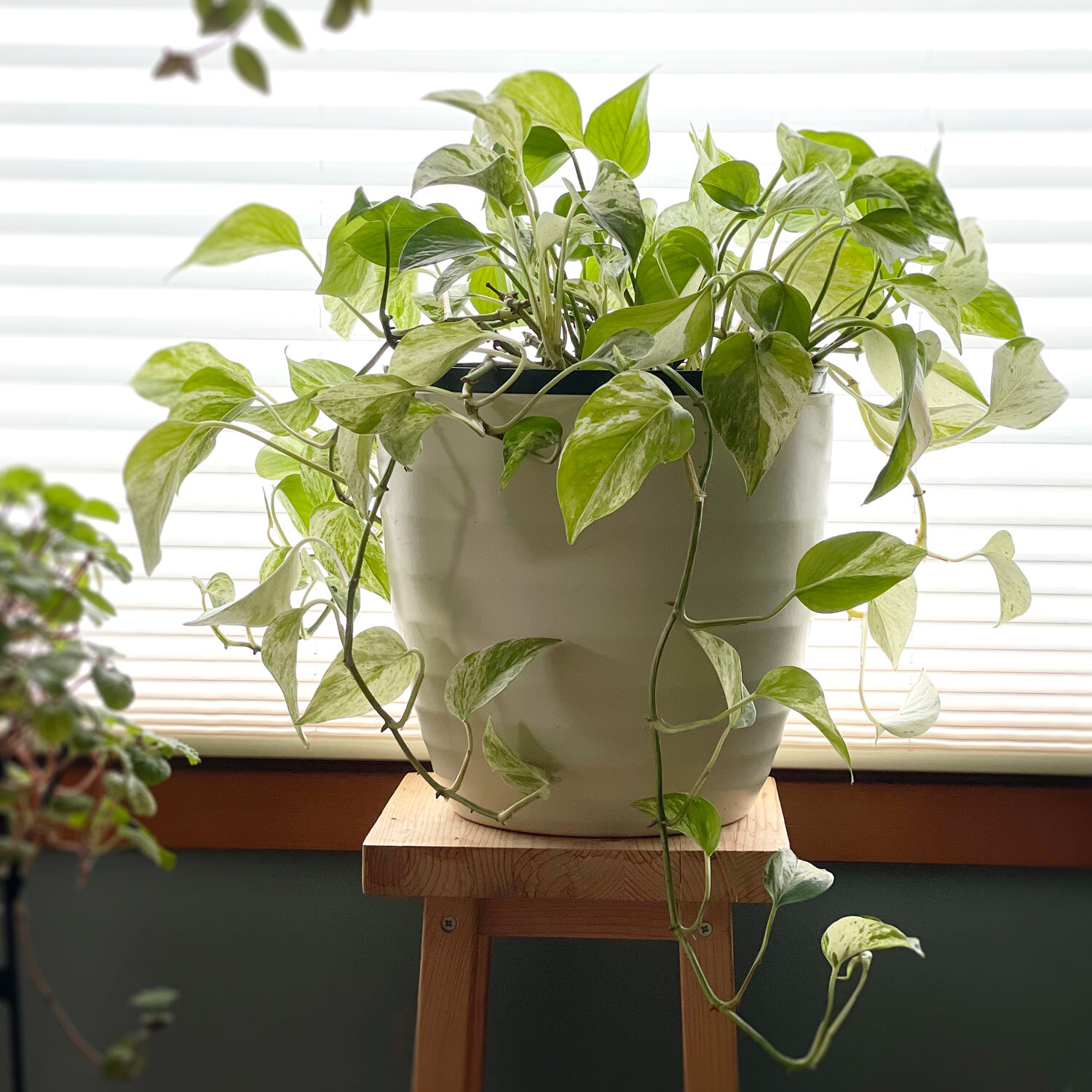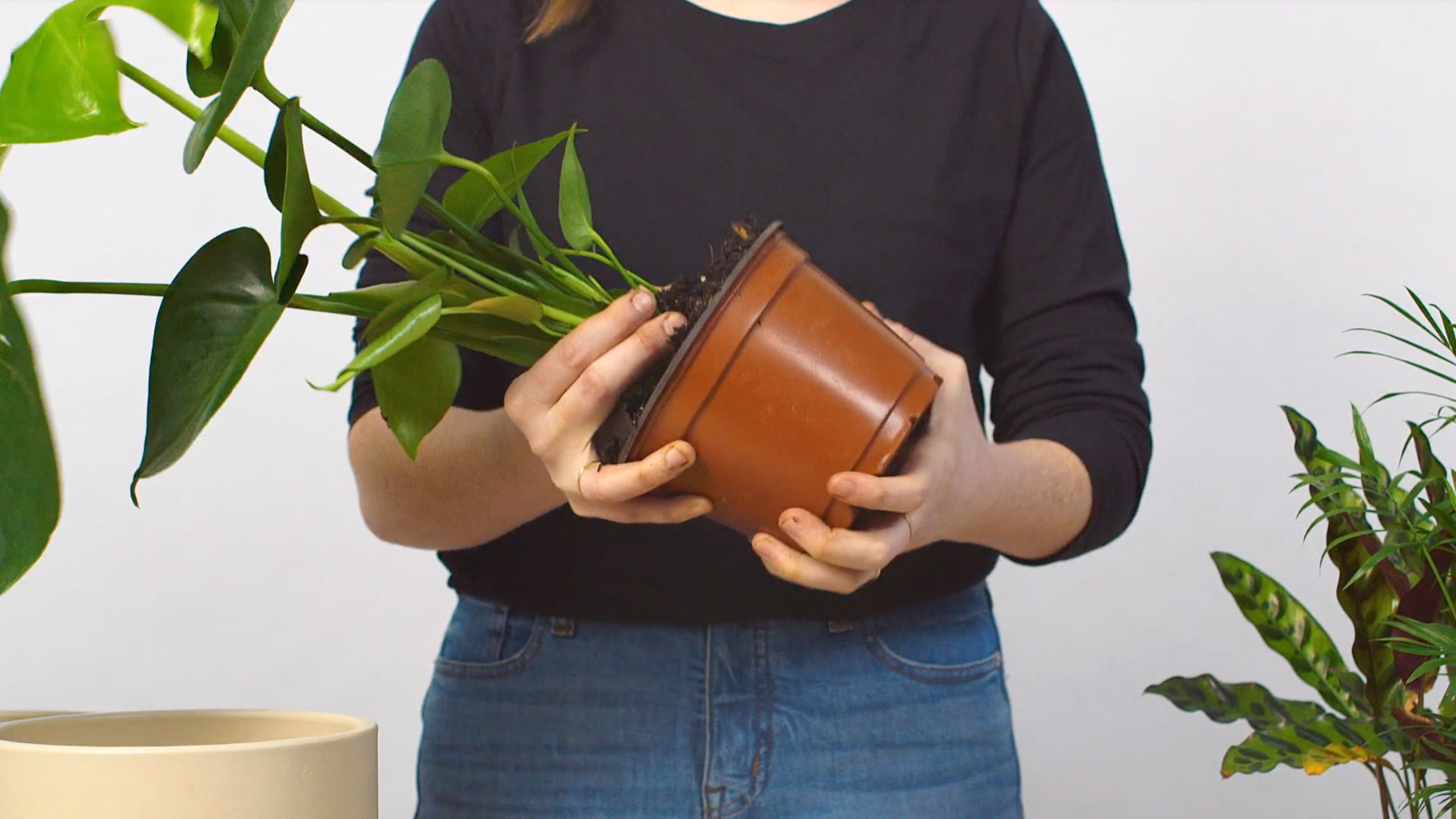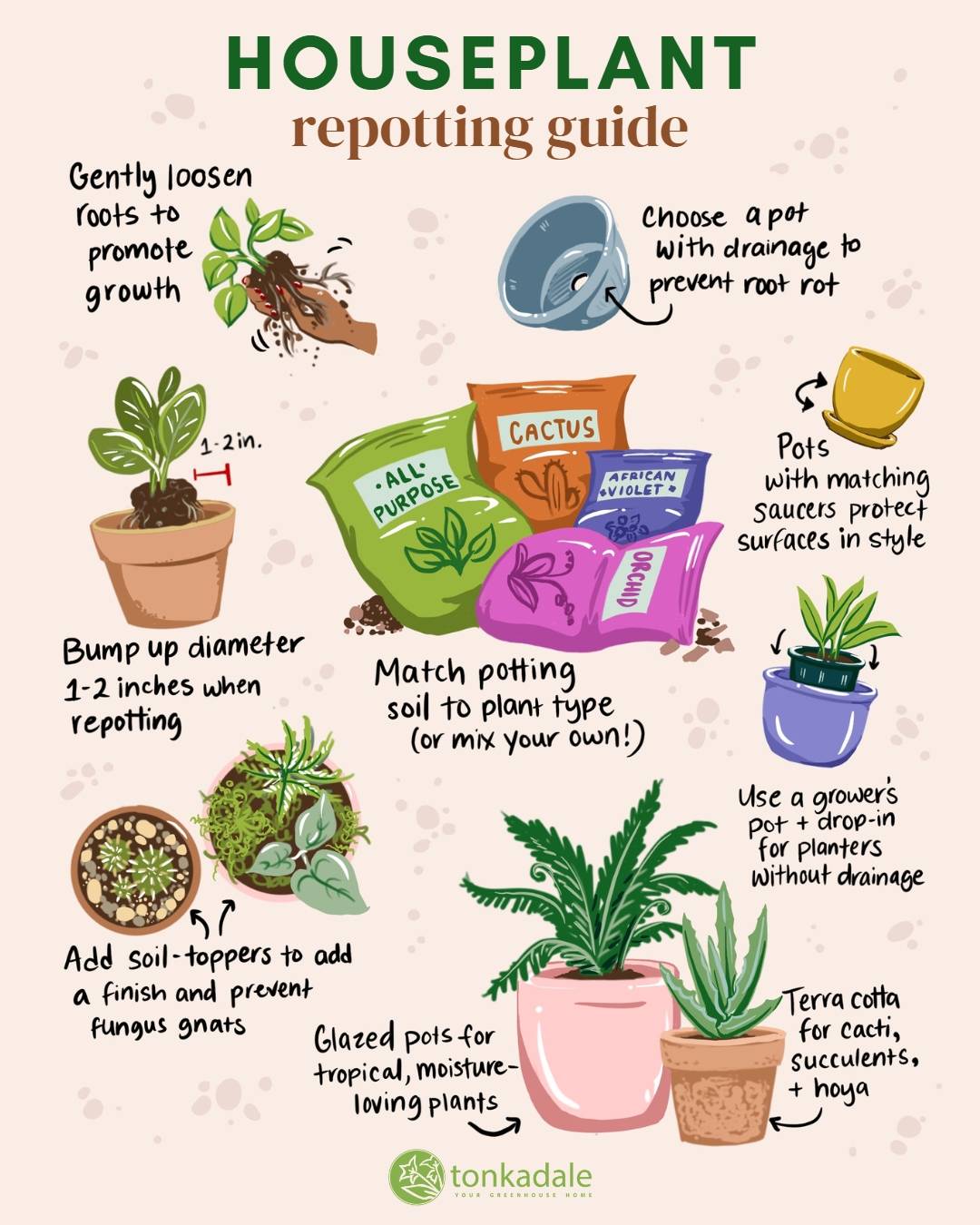You know it’s time to repot an indoor plant when roots grow out of the drainage holes or the plant stops growing. Another sign is if the soil dries out too quickly after watering.
Repotting indoor plants is crucial for their health and growth. Over time, plants outgrow their pots and need more space for their roots. Crowded roots can lead to poor nutrient absorption and stunted growth. Fresh soil provides new nutrients and improves drainage.
Repotting also allows you to inspect the roots for any signs of disease or rot. Choose a pot slightly larger than the current one and use quality potting mix. Doing this ensures your plants thrive and remain vibrant. Regularly checking your plants helps you determine the best time for repotting.

Credit: cleverbloom.com
Recognizing Root Bound Symptoms
Indoor plants need special care to thrive. Recognizing root bound symptoms ensures your plants stay healthy. When plants outgrow their pots, they exhibit clear signs. Let’s look at these symptoms.
Roots Circling The Pot
One clear sign of a root bound plant is roots circling the pot. When you remove the plant from its pot, check the root ball. If roots wrap around the soil in a circular pattern, your plant is root bound. This happens when roots run out of space. They start growing around themselves.
Roots should grow outward, not in circles. Healthy roots spread out in search of nutrients. Circular roots signal a need for a bigger pot. If left unchecked, the plant’s growth can be stunted. The plant may even die.
Roots Growing Out Of Drainage Holes
Another symptom is roots growing out of drainage holes. Check the bottom of the pot. If you see roots poking out, it’s a clear sign. The plant has outgrown its current space. Roots seek more room when confined. They escape through drainage holes.
Roots outside the pot can dry out quickly. This stresses the plant. It’s essential to repot before the plant suffers. Give your plant a pot with more space. This allows the roots to expand naturally.
| Symptom | Action Needed |
|---|---|
| Roots Circling the Pot | Repot to a larger container |
| Roots Growing Out of Drainage Holes | Repot to prevent stress and root damage |
Recognizing these signs helps maintain a healthy indoor plant. Always keep an eye on your plant’s roots. Timely repotting ensures robust growth and a thriving plant.
Slow Or Stunted Growth
Indoor plants can be a delightful addition to any home. But how do you know when it’s time to repot them? One clear sign is slow or stunted growth. This can indicate that your plant needs more space or fresh soil to thrive.
Limited New Leaves
Observe the leaves of your indoor plant. If you notice limited new leaves forming, it might be time to repot. Healthy plants usually produce new leaves regularly. This is a sign of growth and vitality.
A lack of new leaves can mean the roots are crowded. They don’t have enough room to support more growth. Repotting can give them the space they need.
Slowed Stem Growth
Another sign of slow or stunted growth is slowed stem growth. Healthy stems should grow steadily. If the stems aren’t growing as they should, it might indicate a problem.
Check if the stems appear weak or thin. This can be a sign of nutrient deficiency or root congestion. Repotting your plant can help restore its health and vigor.
| Sign | Possible Cause | Solution |
|---|---|---|
| Limited New Leaves | Root Crowding | Repot to a Larger Pot |
| Slowed Stem Growth | Nutrient Deficiency | Use Fresh Soil |
Watering Issues
Watering issues are a common sign that your indoor plant needs repotting. Addressing these issues promptly can help your plant thrive. Let’s dive into some specific signs.
Water Draining Too Quickly
If water drains too quickly, the plant’s roots might not absorb enough moisture. This issue often occurs because the soil has degraded over time. The soil might be old and has lost its ability to retain water.
Signs of Water Draining Too Quickly:
- Water flows out immediately after watering.
- The soil feels dry soon after watering.
- The plant looks wilted despite regular watering.
Solution:
- Check the plant’s roots.
- If roots are tightly packed, it’s time to repot.
- Choose a pot with good drainage holes.
- Use fresh, high-quality potting soil.
Soil Staying Wet Too Long
If the soil stays wet for too long, it can lead to root rot. This problem indicates that the soil’s drainage ability is compromised. The roots might be sitting in water, causing them to rot.
Signs of Soil Staying Wet Too Long:
- Soil feels wet days after watering.
- The plant shows yellowing leaves.
- There is a foul smell coming from the soil.
Solution:
- Inspect the plant’s roots for rot.
- If roots are mushy or smell bad, repot immediately.
- Ensure the new pot has proper drainage.
- Use a well-draining potting mix.

Credit: www.swansonsnursery.com
Yellowing Or Wilting Leaves
Indoor plants bring life and color to our homes. But sometimes, they show signs that they need help. Yellowing or wilting leaves can be a sign that your plant needs to be repotted. This section will help you understand these signs better.
Leaf Discoloration
When you see leaves turning yellow, it may mean the plant is stressed. Yellow leaves can happen for several reasons. One common cause is that the plant has outgrown its pot.
- Roots can’t get enough nutrients.
- The soil might be too old.
- Water may not drain well.
Check the roots. If they are crowded, it’s time for a bigger pot.
Frequent Wilting
Does your plant wilt often even after watering? This can be another sign. The plant may not have enough space to grow.
- Roots fill the pot completely.
- Water can’t reach the soil properly.
- Plant shows stress signs like wilting.
Repotting can give the roots more space and better access to water.
| Sign | Possible Cause |
|---|---|
| Yellowing Leaves | Nutrient deficiency, old soil, poor drainage |
| Frequent Wilting | Root crowding, poor water absorption |
Understanding these signs can help you keep your indoor plants healthy. Repotting might be the solution they need.
Soil Degradation
Soil degradation is a common problem for indoor plants. Over time, the soil in your plant’s pot can lose its quality. This affects the health and growth of your plants. Knowing the signs of soil degradation helps you decide when to repot.
Compacted Soil
Compacted soil is a clear sign of degradation. Healthy soil has air pockets for roots to breathe. When soil becomes compacted, these pockets disappear. This makes it hard for water to drain. Roots can’t get enough oxygen.
To check for compacted soil, press your finger into the soil. If it feels hard, it’s compacted. Another sign is water pooling on the surface. This means water can’t seep through the soil.
Loss Of Nutrient Content
Plants rely on soil nutrients to grow. Over time, soil loses its nutrients. This is due to constant watering and root activity. Without nutrients, plants can’t thrive.
Look for signs like yellowing leaves or stunted growth. These symptoms indicate nutrient loss. Using a soil test kit can also help. It measures nutrient levels in the soil.
Repotting with fresh soil replenishes lost nutrients. This gives your plants a fresh start and boosts their growth.
Visible Salt Buildup
Visible salt buildup is a clear sign your indoor plant needs repotting. This problem often occurs due to the accumulation of minerals from water and fertilizers. These salts can harm your plant’s roots and hinder its growth. Let’s explore the signs of visible salt buildup.
Crusty Soil Surface
If you notice a crusty layer on the soil surface, it indicates salt accumulation. This crusty layer can prevent water from penetrating the soil. The plant roots might not get enough water as a result. Check the soil for a rough, white crust.
White Residue On Pot
Another sign is a white residue on the pot. This residue often appears around the pot’s rim and drainage holes. The salt buildup can clog the pot, affecting water drainage. Wipe off the residue to check if it reappears quickly.
| Sign | Description |
|---|---|
| Crusty Soil Surface | White, rough layer on the soil |
| White Residue on Pot | White deposits around pot rim and holes |
Regularly checking for salt buildup can keep your plants healthy. Remove the buildup and repot if necessary. Repotting helps refresh the soil and gives the roots more space.
Pot Cracking Or Bulging
Indoor plants need special attention. One clear sign to repot is when the pot cracks or bulges. This is often due to the plant’s roots outgrowing their current home. The pressure from the roots can cause the pot to change shape or break. Let’s explore how to recognize and address these issues.
Damaged Pot
A damaged pot is a significant sign that your plant needs repotting. Cracks can appear along the sides or bottom of the pot. These cracks occur because the roots push against the pot walls. When you notice these cracks, it’s time to move your plant to a larger pot.
You can use a table to remember the signs of a damaged pot:
| Sign | Description |
|---|---|
| Cracks | Visible splits on the pot’s surface. |
| Fragments | Pot pieces breaking off. |
Distorted Pot Shape
A pot can change shape due to root pressure. The pot may bulge or warp. This distortion happens because the roots need more space. When you see the pot’s shape change, repotting is necessary.
Remember these key points about a distorted pot shape:
- Bulging sides
- Uneven bottom
By recognizing these signs, you keep your plant healthy. Always check for pot damage or shape changes. Repotting helps your plant grow strong and flourish.
Seasonal Indicators
Knowing when to repot an indoor plant can be tricky. Seasonal indicators are helpful in determining the best time for repotting. Understanding these signs ensures your plant thrives all year round.
Spring Growth Spurts
Spring is a time of new beginnings. Plants often show significant growth during this season. If you notice your plant outgrowing its pot, it might be time to repot.
- Roots growing out of drainage holes
- Leaves turning yellow or falling off
- Water draining too quickly or too slowly
These signs indicate the plant needs more space and nutrients. Repotting in spring helps the plant adjust and continue its growth spurt. Choose a pot that is one size larger for best results.
Dormant Season Considerations
During the dormant season, typically fall and winter, plants rest. They do not grow much. Repotting during this time can stress the plant.
Signs to look out for:
- Plant appears root-bound
- Soil becomes compacted
- Water sits on the surface for too long
If these signs appear, wait until early spring. The plant will be more resilient and ready for a new pot. Provide enough light and water to keep it healthy during the dormant months.

Credit: www.thesill.com
Frequently Asked Questions
How To Tell If A Houseplant Needs Repotting?
Check for roots growing out of drainage holes. Notice if the plant looks cramped or stunted. Soil dries out quickly. Leaves yellow or wilt. Soil or plant smells bad.
How Do You Know When A Plant Is Ready To Repot?
A plant is ready to repot when roots grow out of the drainage holes. Also, check if the soil dries out quickly.
How Often Should You Repot Indoor Plants?
Repot indoor plants every 1-2 years. Check for roots growing out of the pot or slow growth. Use fresh soil.
When Not To Repot Plants?
Avoid repotting plants during their blooming period or dormancy. Repotting can stress plants during these critical times.
Conclusion
Repotting indoor plants ensures they stay healthy and vibrant. Look for signs like root-bound soil, slow growth, or yellowing leaves. Regular checks help maintain your plant’s well-being. Repotting gives plants the space they need to thrive. Happy plants make for a happier home environment.

My mission is to help you bring the beauty of nature indoors with expert advice, detailed plant care guides, and creative design ideas.





Leave a Reply